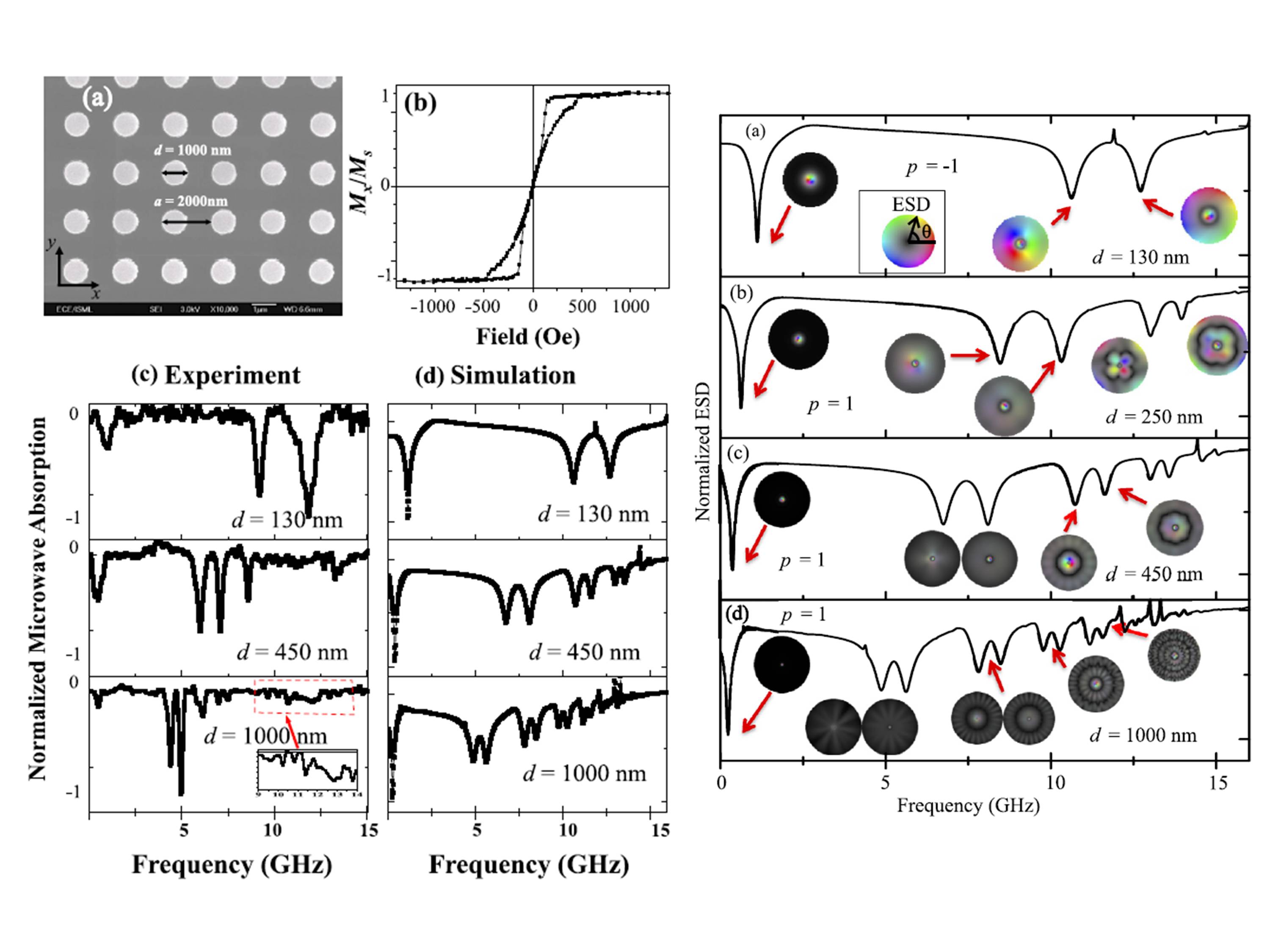Magnetic topologies  A clear reinvigoration of interest has been seen in the study of static and dynamic phenomena of magnetic vortices and other topologies ever since its first experimental evidence was reported in 1999 during a study of nanodisks with varying diameters and thicknesses. These topologies present potential application in the field of magnetic data storage, logic and sensing. With improvements in fabrication techniques, the scope of study involving magnetic vortices is expanding to nanodisks which were difficult to examine before. In our ongoing research, we are examining stepped nanodisks and nanodisks with high thickness to diameter aspect ratio. A clear reinvigoration of interest has been seen in the study of static and dynamic phenomena of magnetic vortices and other topologies ever since its first experimental evidence was reported in 1999 during a study of nanodisks with varying diameters and thicknesses. These topologies present potential application in the field of magnetic data storage, logic and sensing. With improvements in fabrication techniques, the scope of study involving magnetic vortices is expanding to nanodisks which were difficult to examine before. In our ongoing research, we are examining stepped nanodisks and nanodisks with high thickness to diameter aspect ratio.
- We investigate the radial and azimuthal spin-wave (SW) resonance modes in permalloy (Py: Ni80Fe20) disks at zero external magnetic field, as function of disk diameter and thickness, using broadband ferromagnetic resonance spectroscopy. We observed, from both experimental and micromagnetic simulation results that the number of SW absorption peaks increases with disk diameter. Numerically calculated SW mode profiles revealed a characteristic minimum size, which does not scale proportionately with the increasing disk diameter. We show that higher order modes could thus be avoided with an appropriate choice of the disk diameter (smaller than the minimum mode size). Moreover, based on the mode profiles, the existence of azimuthal SW modes with even number of crests or troughs can be ruled out. These results could be useful in enhancing our fundamental understanding as well as engineering of new magnonic devices. (http://dx.doi.org/10.1063/1.4927769)
- Magnetic vortex that consists of an in-plane curling magnetization configuration and a needle-like core region with out-of-plane magnetization is known to be the ground state of geometrically confined submicron soft magnetic elements. Here magnetodynamics of relatively thick (50–100 nm) circular Ni80Fe20 dots were probed by broadband ferromagnetic resonance in the absence of external magnetic field. Spin excitation modes related to the thickness dependent vortex core gyrotropic dynamics were detected experimentally in the gigahertz frequency range. Both analytical theory and micromagnetic simulations revealed that these exchange dominated modes are flexure oscillations of the vortex core string with n = 0,1,2 nodes along the dot thickness. The intensity of the mode with n = 1 depends significantly on both dot thickness and diameter and in some cases is higher than the one of the uniform mode with n = 1. This opens promising perspectives in the area of spin transfer torque oscillators. (http://dx.doi.org/10.1038/srep04796)..
- Vortex gyrotropic modes in ferromagnetic nanostructures can be described as flexure oscillations of the vortex core line with different number of nodes n along the dot thickness. By conducting broadband ferromagnetic resonance measurements in the absence of external magnetic field on Ni80Fe20 circular nanodots with radius R = 150 nm and thickness 50 <= L <= 100 nm, we established that above L =70 nm the intensity of more complicated n = 1 vortex mode is unexpectedly higher than the one of n = 0 mode. The observed behaviour is explained on the basis of the inhomogeneous vortex mode phase profiles extracted from micromagnetic simulations. The phase difference of vortex core gyrations at the top and bottom dot faces is essentially different from 0 and p. The difference is increasing with increase in the dot aspect ratio L/R for the 0th order mode, whereas an inverse relationship is observed for the 1st order mode. The analytical theory indicates that this phase difference has magnetostatic origin. (http://dx.doi.org/10.1063/1.4878617)
- The magnetic vortex dynamics in thickness-modulated Ni80Fe20 disks in the form of a Ni80Fe20 lens on top of a Ni80Fe20 disk are investigated. The vortex core location can be systematically controlled via the geometry, and the propagation and annihilation can be detected using ferromagnetic resonance measurements. The thickness modulation provides an additional shape anisotropy, which defines the vortex chirality in the disk depending on the magnetization reversal history and the magnetic interactions between the disk and the lens. The vortex propagation and annihilation in each layer were identified by their resonance modes. (http://dx.doi.org/10.1103/PhysRevB.87.214422)

|

